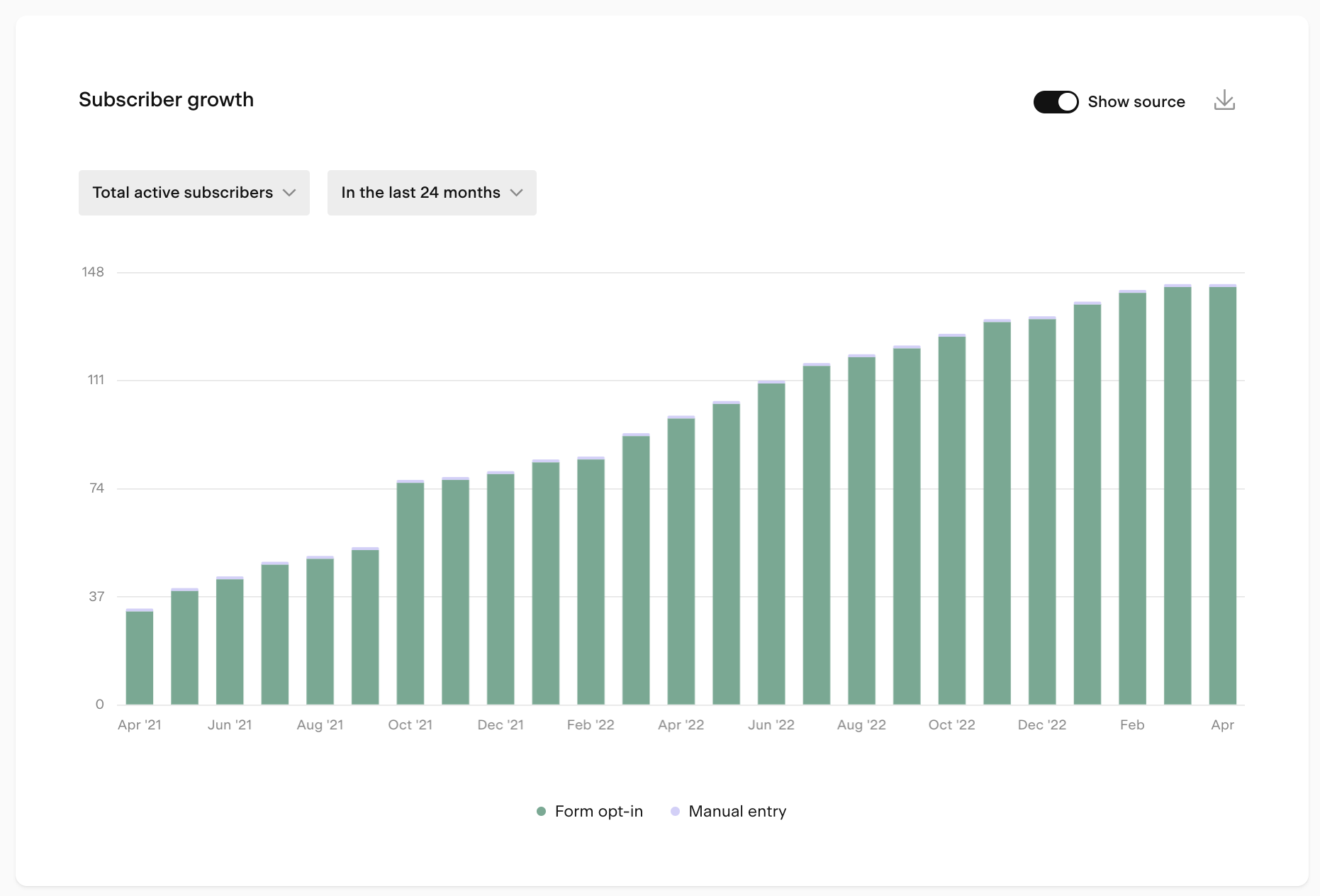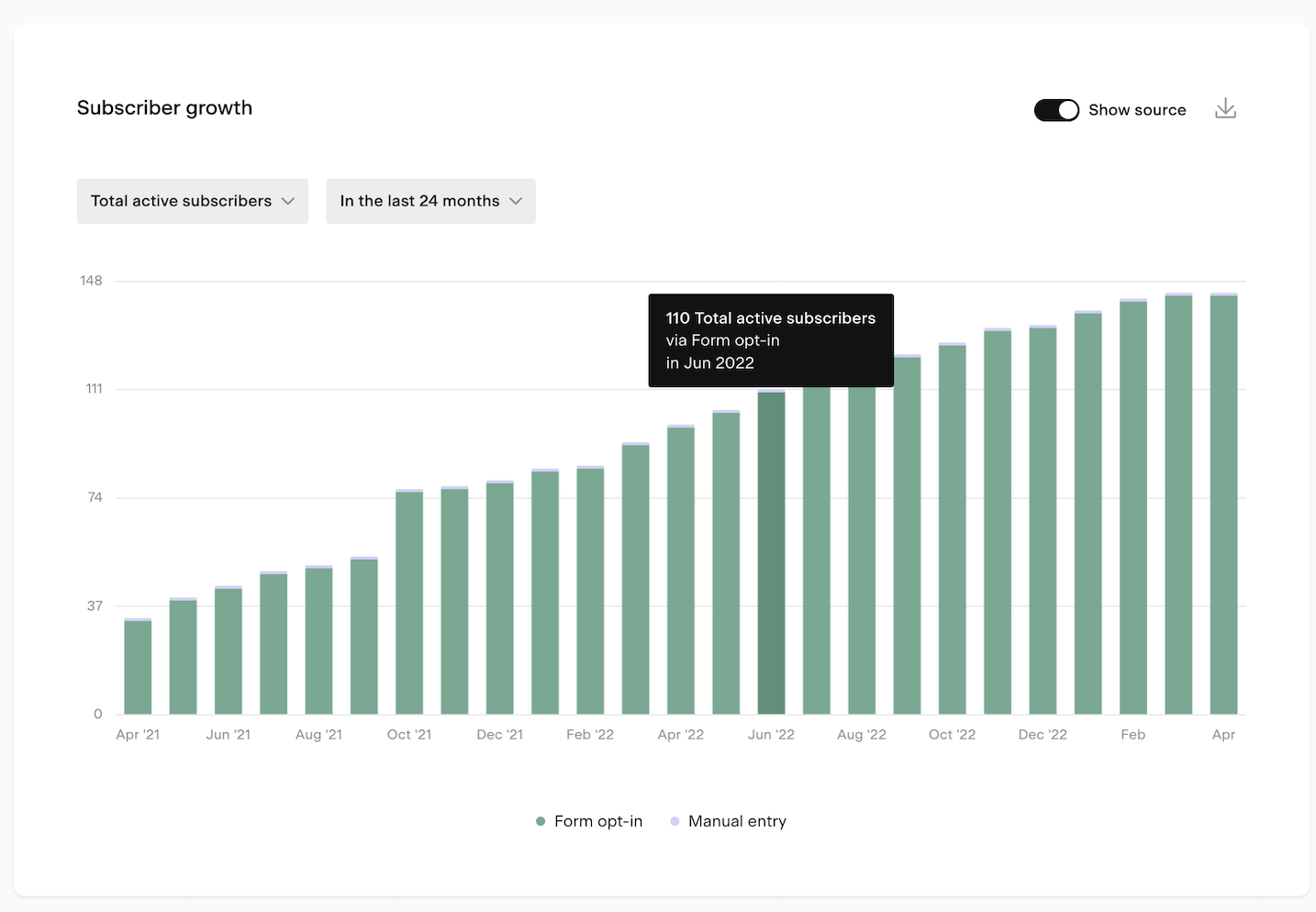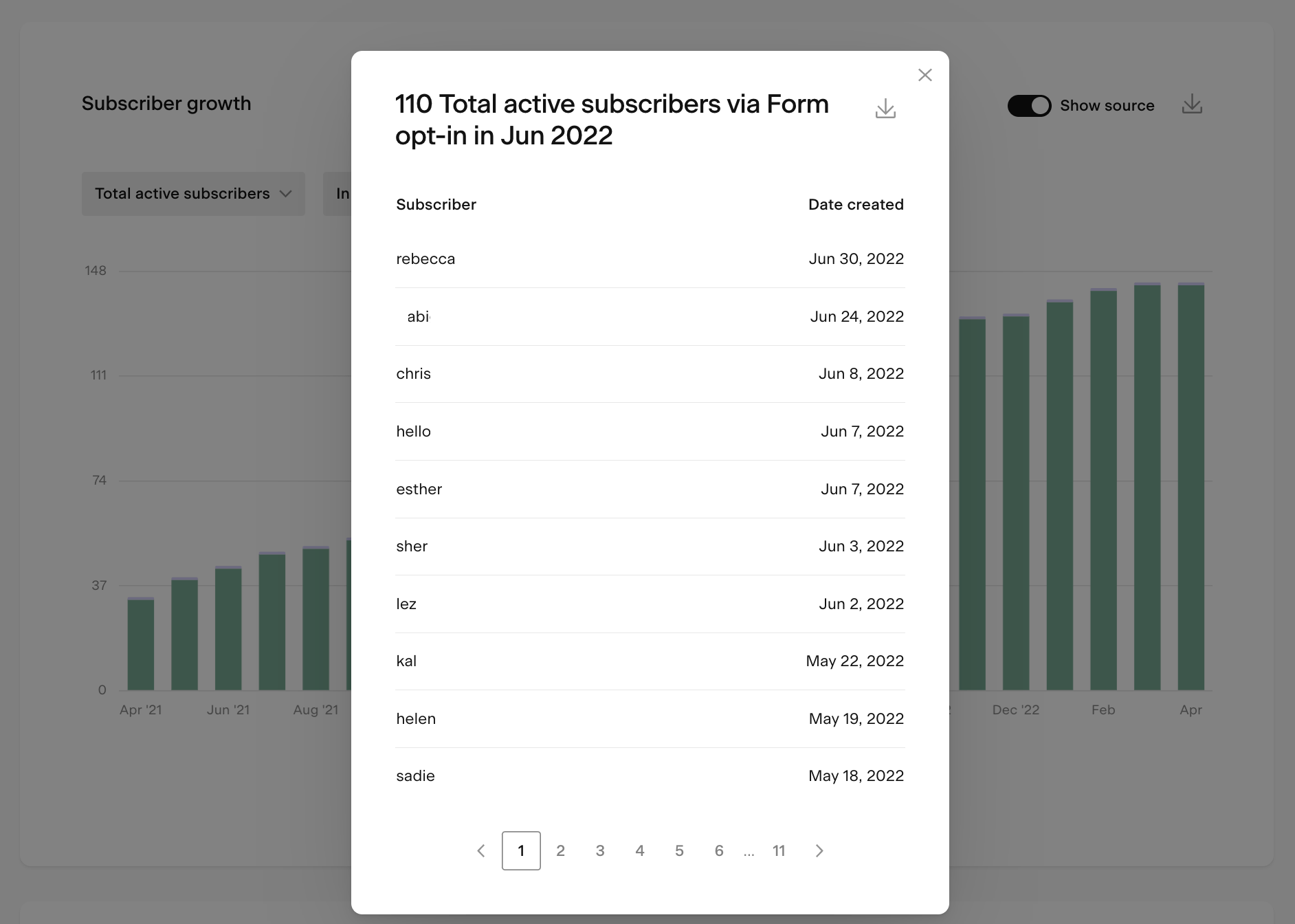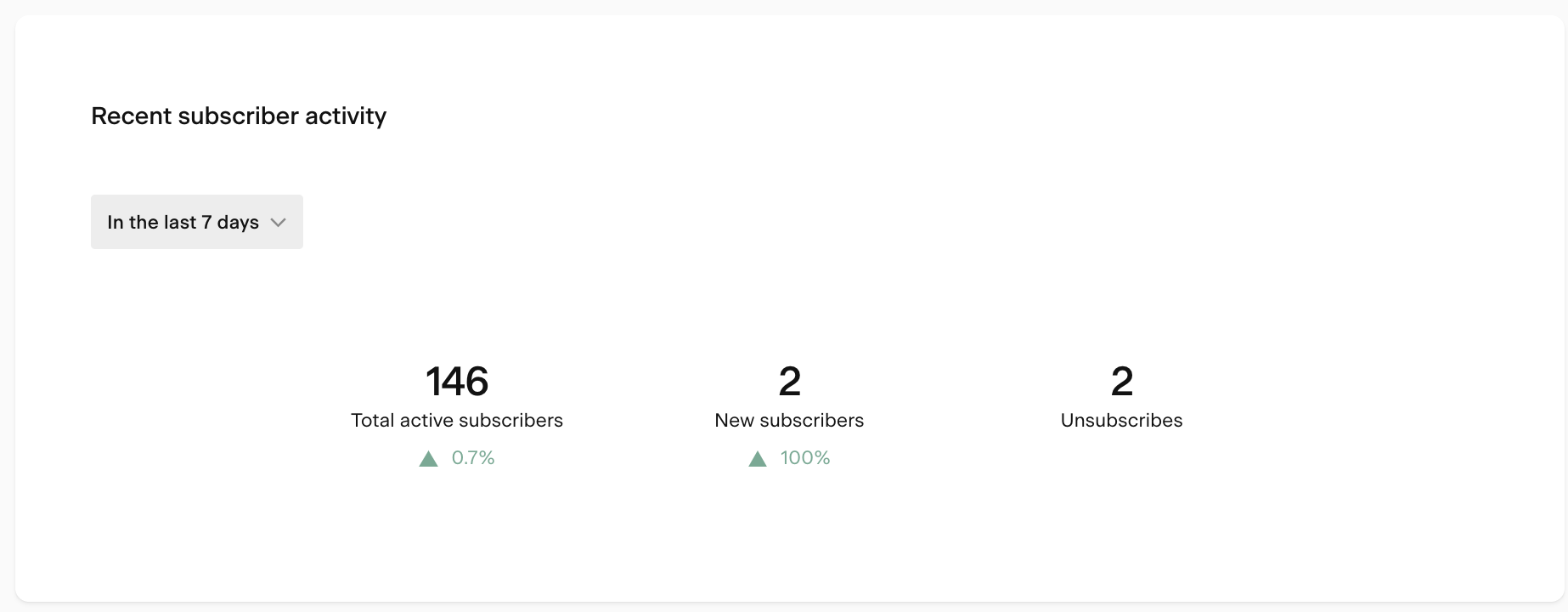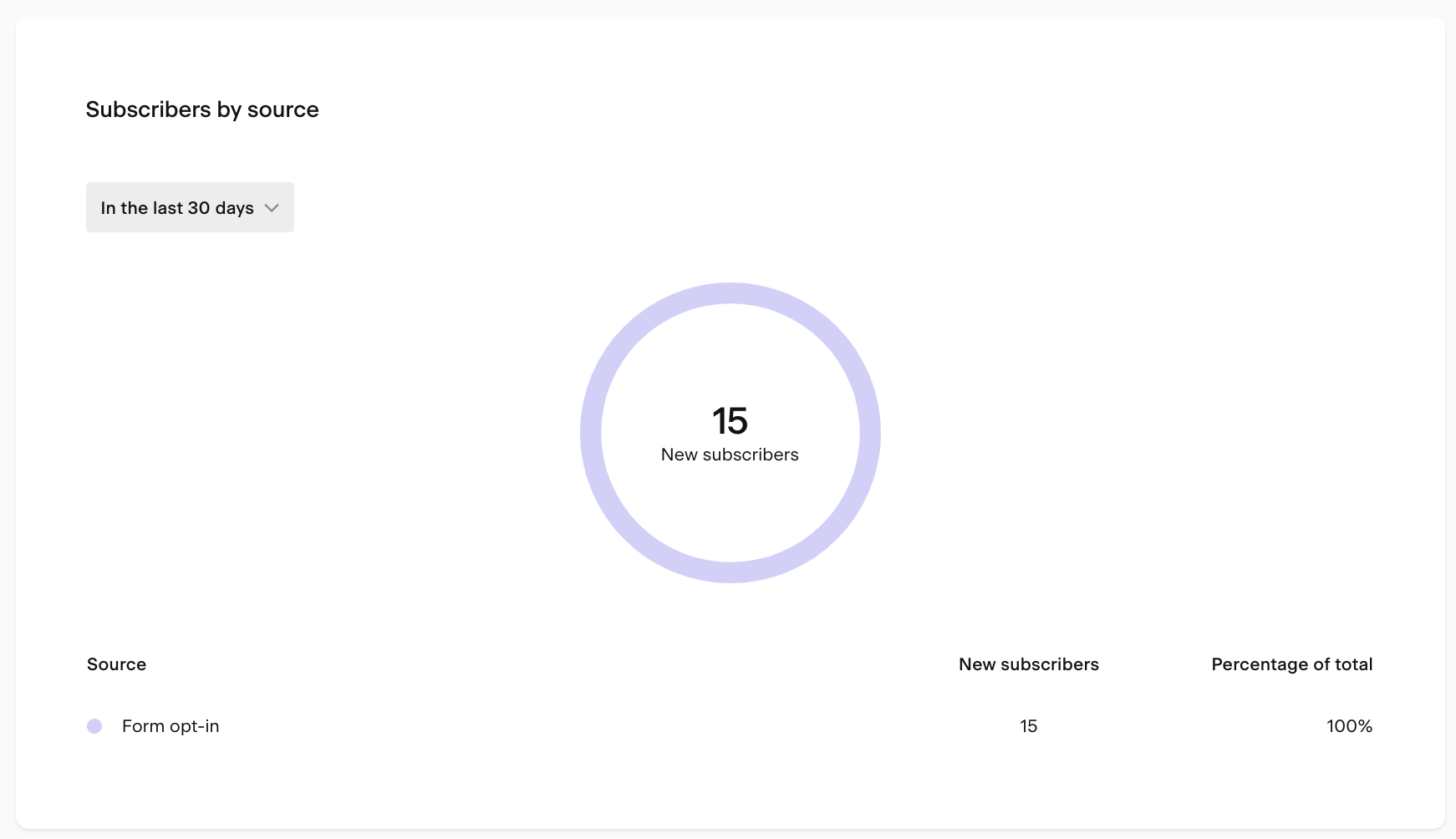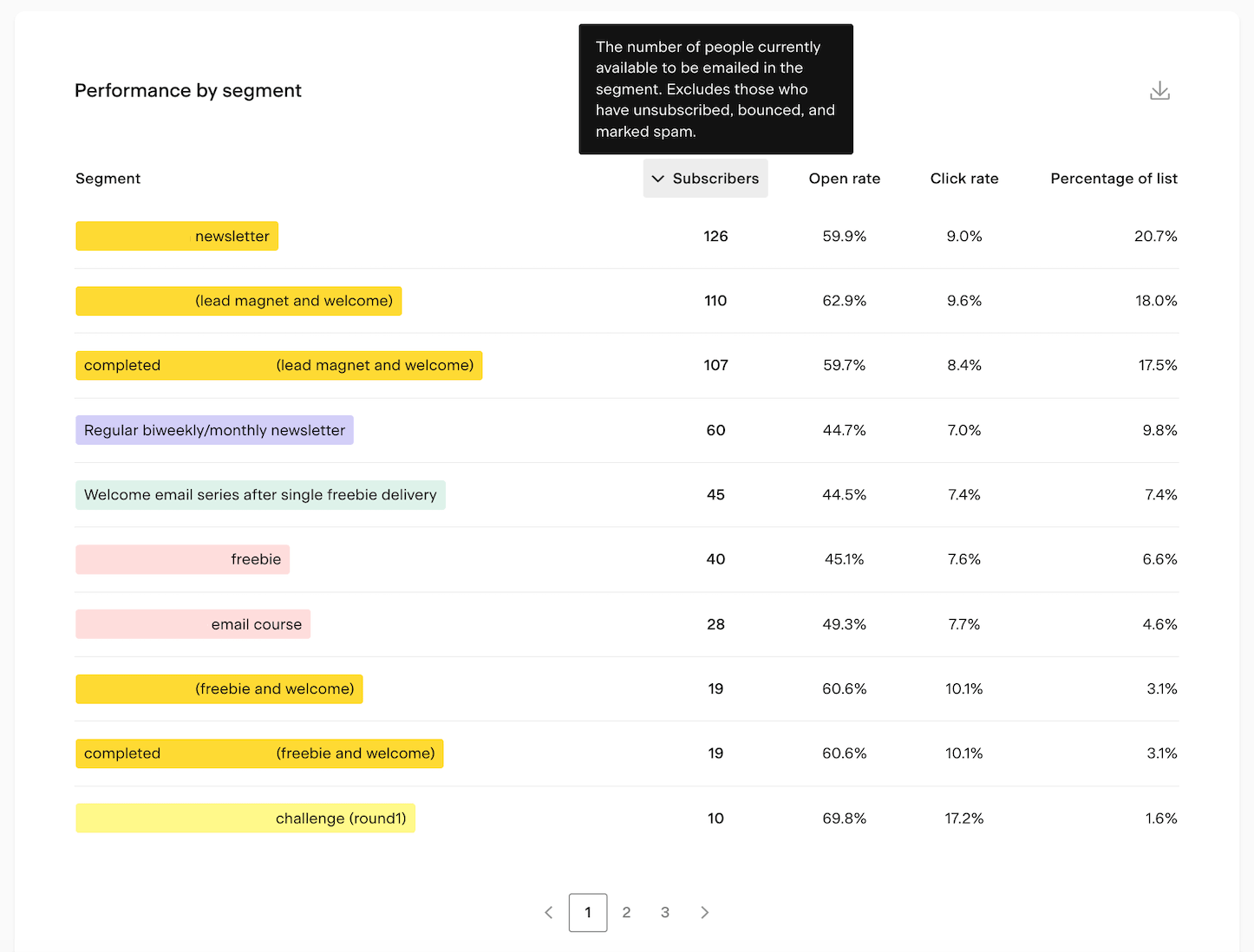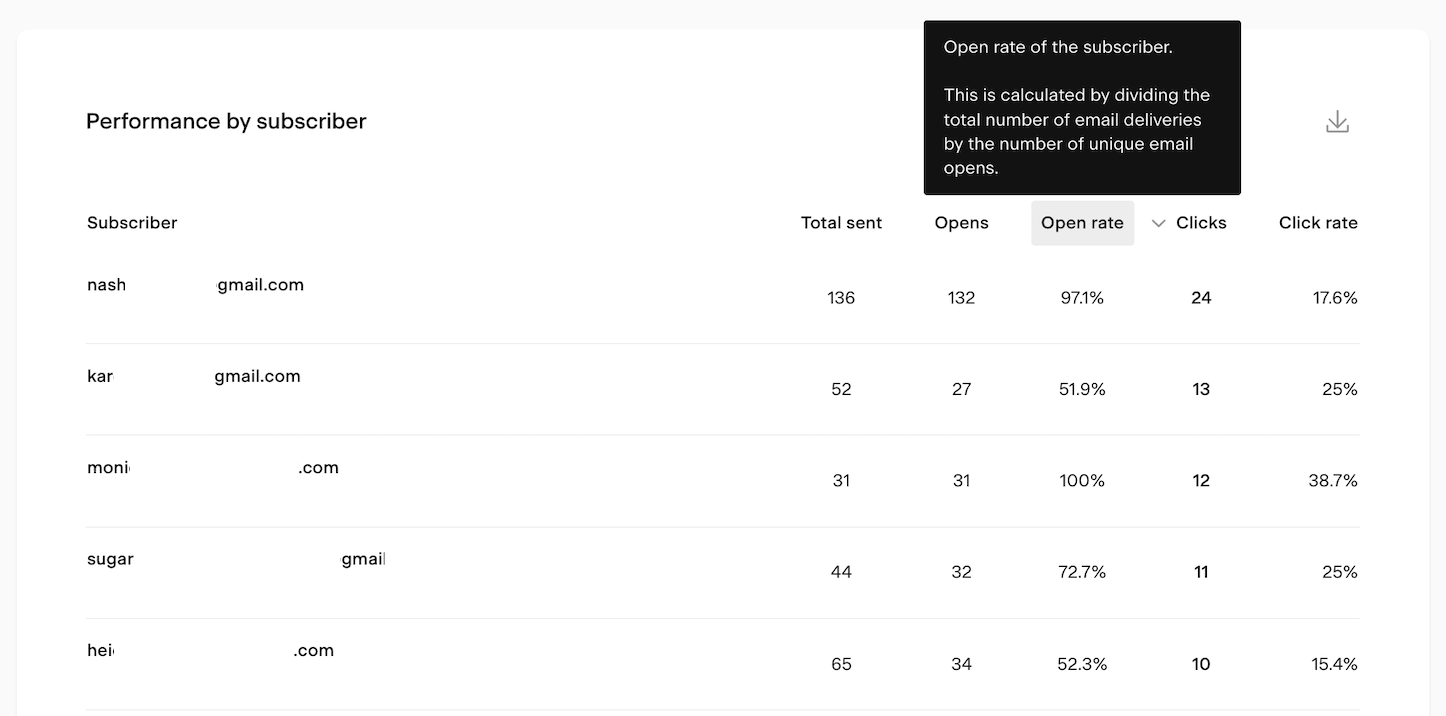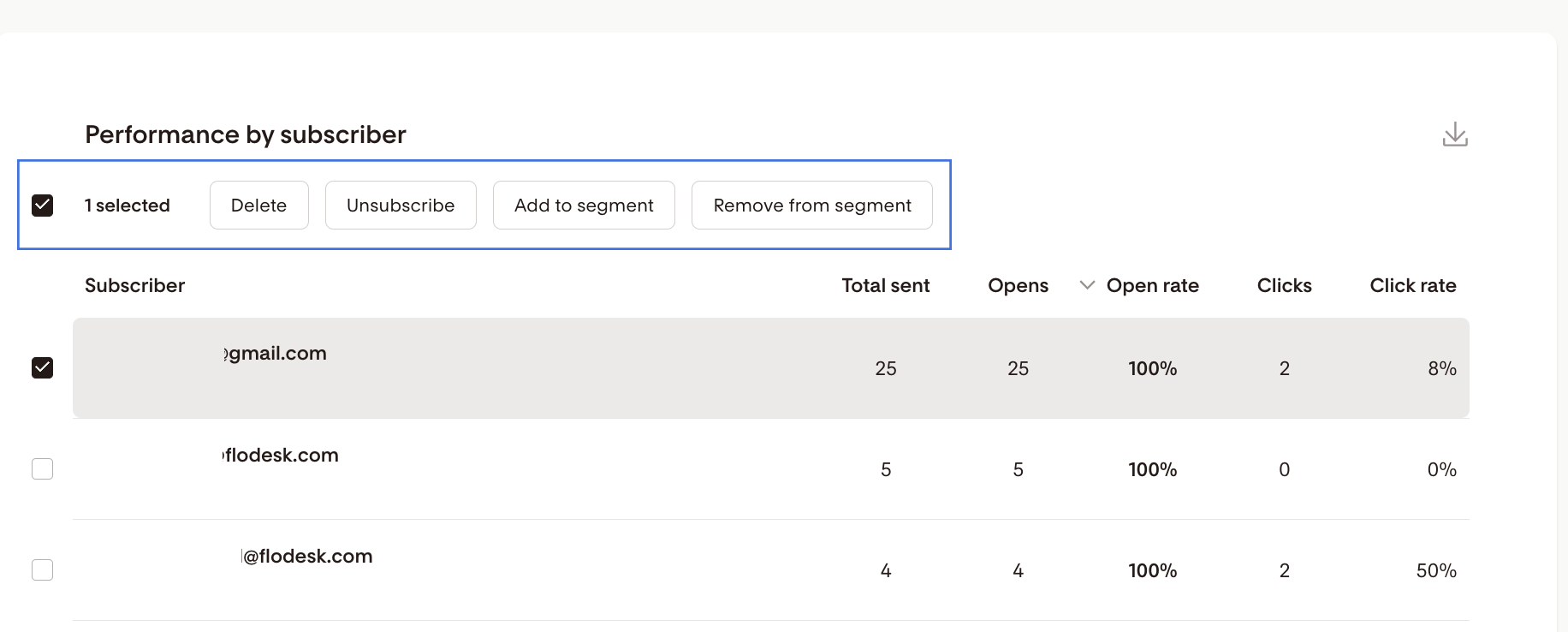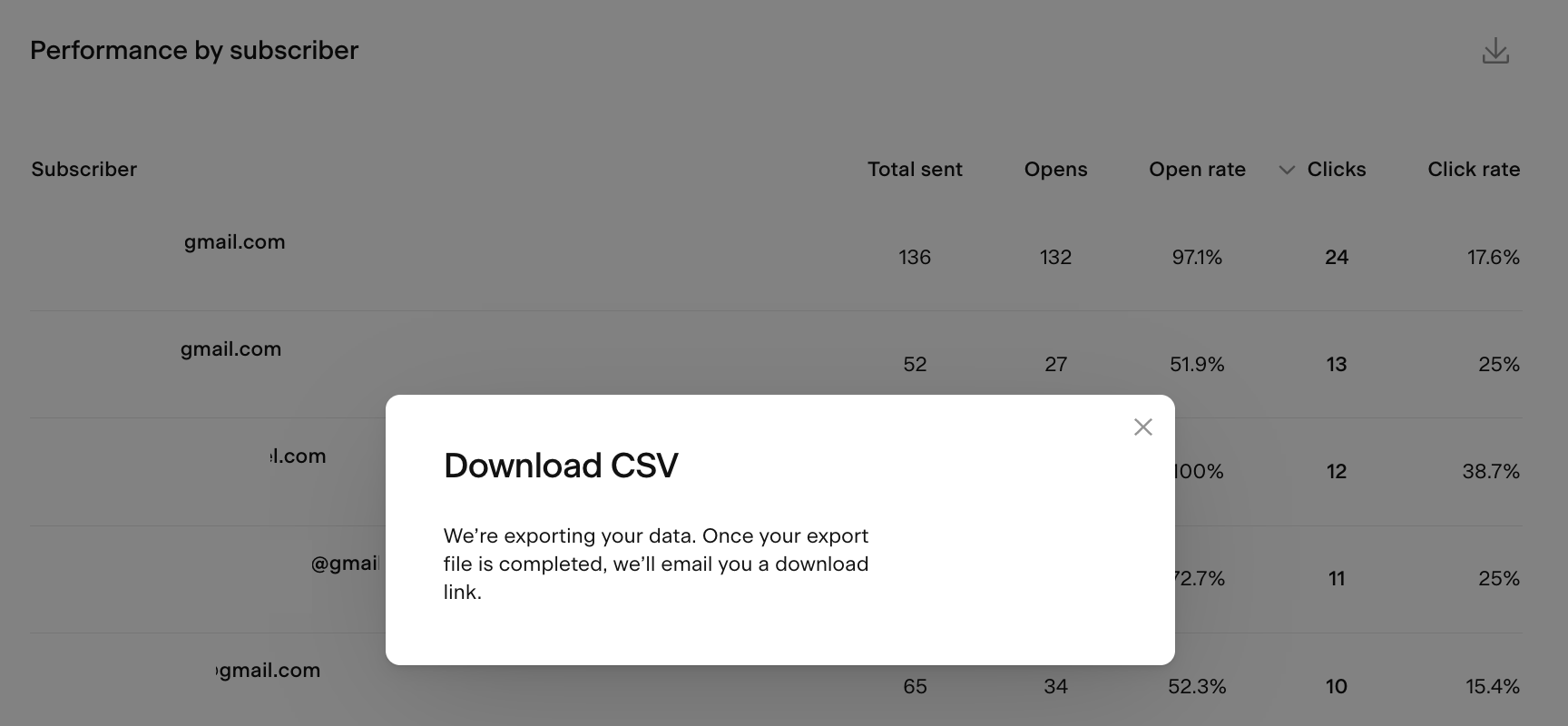Subscribers insights
A quick overview of your account-level subscribers analytics dashboard
Have you ever wondered who your most active, “clickiest” subscribers are? Or how is your list growing over time?
The account-level subscriber analytics dashboard provides powerful insights that you can take action on right away.
In this article, you’ll learn
how to access your subscribers analytics dashboard,
what type of information you can find on the various chart types, and
how to export the data contained within the current chart views.
Where can I find the Subscribers analytics dashboard?
To access the detailed subscribers analytics dashboard, go to Analytics > Subscribers.
What kind of data can I find on the Subscribers analytics dashboard?
Subscribers at a glance
On the top of the subscribers analytics page, the Subscribers at a glance metric card gives you a quick overview of your:
Total active subscribers: Current total (count) of active subscribers
New subscribers in the last 7 days: Count of new subscribers in last 7 days
New subscribers in the last 30 days: Count of new subscribers in last 30 days
Note: active subscribers are those who haven’t unsubscribed, bounced or marked your email as spam and are eligible to get emails from you.
Subscriber growth
With the help of the following bar chart on the page, you can keep an eye on your Subscriber growth. Use the below controls to fine-tune your data view.
(1) Metric drop-down:
This drop-down lets you pick the metric (#) represented by the chart's bar height. The scale for this metric is set on the left side of the chart.
You can select:
New subscribers: Count of subscribers whose subscription date falls within the selected timeframe
Total active subscribers: Running total of total active subscribers for the selected timeframe
Unsubscribes: Count of subscribers whose unsubscribe date falls within the selected timeframe
For example, if you had 300 total active subscribers last week and gained 50 this week, "New subscribers" this week would be 50, but "Total active subscribers" for this week would be 350.
(2) Group-by toggle:
Click the Show source toggle on your bar chart to switch between a high-level overview of the data and data broken down by subgroup. The selection here sets the bar color and bar color legend at the bottom of the chart.
For subscriber growth, the following source subgroups are available:
CSV upload
Manual entry
Form opt-in
Checkout customer
Integration
Note: subscribers who've been added to your list via an integration (including via Zapier or Pabbly Connect) will have the source “Integration”.
(3) Time period selector:
Use this to select the time unit the data is viewed by (i.e. Daily or Weekly) as well as the time period of the overall chart (i.e. Last 30 days or 12 weeks).
There are preset chart time periods based on the unit selection and the option to select a custom timeframe.
Daily: 7 days, 14 days, 30 days, Custom
Weekly: 8 weeks, 12 weeks, 24 weeks, Custom
Monthly: 6 months, 12 months, 24 months, Custom
Yearly: All years
Important: all data is displayed based on the timezone you have set in your account settings.
How to use the Subscriber growth bar chart?
A healthy list is a growing list. If you see your list growth slowing down, consider stepping up the promotion of your freebie, creating a new freebie offer, and ensuring your form is included in all the optimal places on your website.
Also, look out for any sudden data spikes and drops and take corrective actions as needed.
When you hover over a bar or section of a bar (when the group-by toggle is turned on), a tooltip details the data contained within that section.
If you click on the same selection, a modal will open that details the data in the selection. You can also export this data view into a CSV file.
Recent subscriber activity
The following chart on the page is a comparative metric chart called Recent subscriber activity. It displays the positive or negative trend (% increase or decrease) of a set of metrics for a selected period (last 7 or last 30 complete days) compared to the previous period (previous 7 or previous 30 days).
You’ll find the following metrics set on this chart:
Total active subscribers: Running total (count) of total subscribers (“list size”) within the selected timeframe, compared to (7/30) days ago.
New subscribers: Count of new subscribers within the selected timeframe
Unsubscribes: Count of unsubscribes within the selected timeframe
How to use the Recent subscriber activity comparative metric chart?
With the help of the comparative metric charts, you can identify trends and take corrective actions when needed.
For example, if you see your new subscriber's growth figure declining in the last 30 days, you can look at the insights on the Forms analytics page to check on the performance of your opt-in forms.
If there’s an alarmingly high number of unsubscribes, analyze your Emails and Workflow analytics pages to understand where and why you lose most subscribers.
Subscribers by source
The Subscribers by source pie chart shows new subscribers by source—including CSV upload, Manual entry, Form opt-in, Checkout customer and Integration—whose subscription date falls within the selected timeframe.
Note: subscribers added to your list via Zapier connection are categorized under “Manual entry”. And subscribers who've been added to your list via an integration (currently only Shopify, more to come!) will have the source “Integration”.
You can pick the following timeframes in the drop-down:
In the last 7 days,
In the last 30 days,
All time.
How to use the Subscribers by source pie chart?
This chart gives you valuable insights on how subscribers join your list so you can double down on initiatives that work best to keep your list growing.
You'll find two tables at the bottom of the subscriber analytics page.
Performance by segment
The Performance by segment table details the overall performance of each segment you've created to group your subscribers.
Hover over the column title to open a tooltip defining the metric.
Click on any column titles to sort the table based on that specific data set.
Column titles:
Subscribers: The number of people currently available to be emailed in the segment. Excluded those who have unsubscribed, bounced, and marked spam.
Open rate: The percentage of unique subscribers who opened your emails compared to the total number of subscribers who received your emails. This is calculated by dividing the total number of email deliveries by the number of unique email opens.
Click rate: The percentage of unique subscribers who clicked on an email link compared to the total number of subscribers who received your emails.
Percentage of list: This is calculated by dividing the total active subscribers by the total active subscribers within the specific segment.
Performance by subscriber
The Performance by subscriber table details the overall performance of your subscribers.
Hover over the column title to open a tooltip defining the metric.
Click on any column titles to sort the table based on that specific data set.
Column titles:
Subscriber: Subscriber email address
Total sent: Number of emails you have sent the subscriber. This includes both single email sends as well as automated workflow emails.
Opens: Number of unique emails the subscriber has opened.
Open rate: Open rate of the subscriber. This is calculated by dividing the total number of email deliveries by the number of unique email opens.
Clicks: Number of unique emails the subscriber has clicked.
Click rate: Click rate of the subscriber. This is calculated by dividing the total number of email deliveries by the number of unique email clicks.
You can also apply bulk actions to selected subscribers under the Performance by subscriber table.
The Delete bulk action will remove the selected subscriber(s) from your entire list, even if they're in a segment. This action is permanent and cannot be undone. We can't retrieve deleted records for you.
The Unsubscribe bulk action will unsubscribe the selected subscriber(s) from your entire list and any segment they are in. These subscribers will no longer receive emails from you unless they resubscribe through a Flodesk opt-in form.
The Add to segment bulk action will add the selected subscriber(s) to the segment(s) of your choosing.
The Remove from segment bulk action will remove the selected subscriber(s) from the segment(s) of your choosing.
Exporting subscriber analytics data
Bar charts, bar chart pop-ups and tables have the ability to export a CSV containing the data of the chart view by clicking the download icon. If you choose to export, you will receive an email with a link to the CSV file.
Note: the CSV link in the email expires after 24 hours. You need to generate a new report if you missed accessing and downloading the CSV file within 24 hours.
Summary
To access the detailed Subscribers analytics dashboard, click the Analytics tab in the top navigation bar, then select the Subscribers page view.
Use the insights on this page to see how your list is growing over time, how each segment is performing, and who your most engaged subscribers are.


